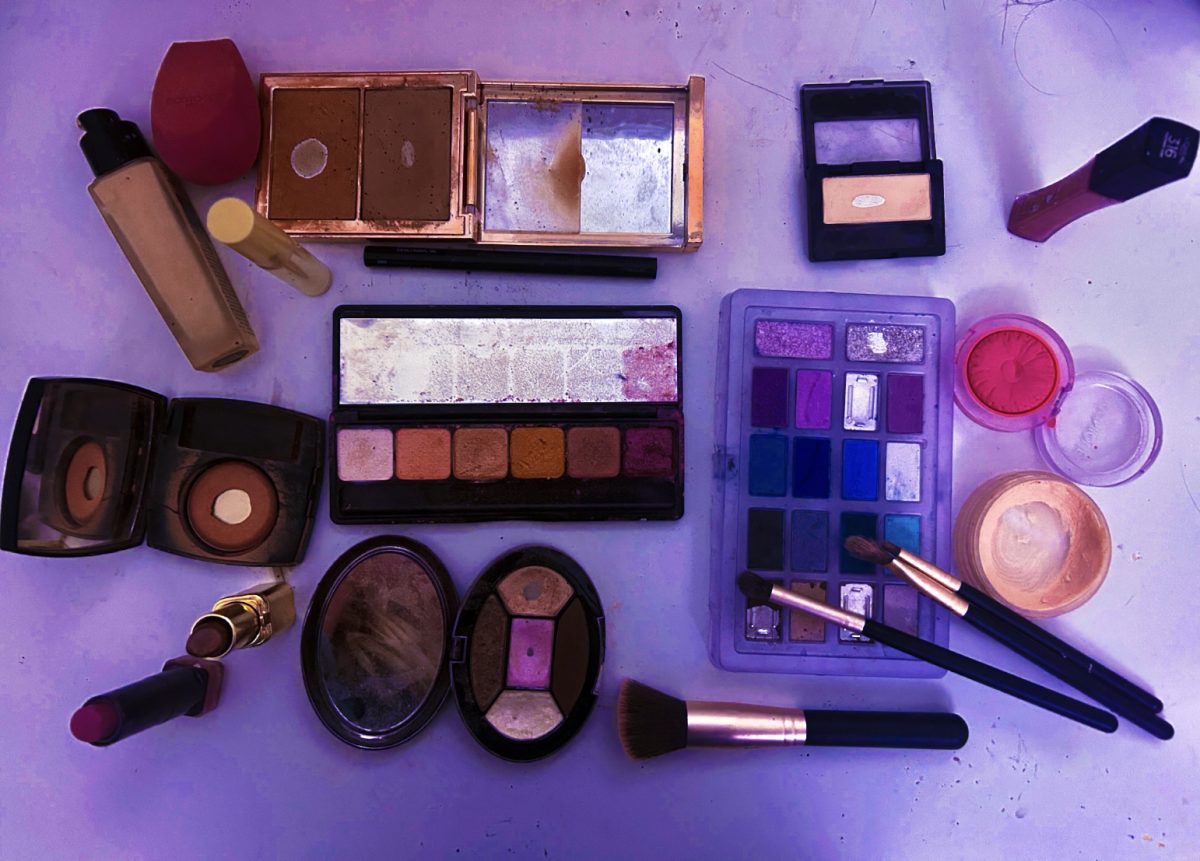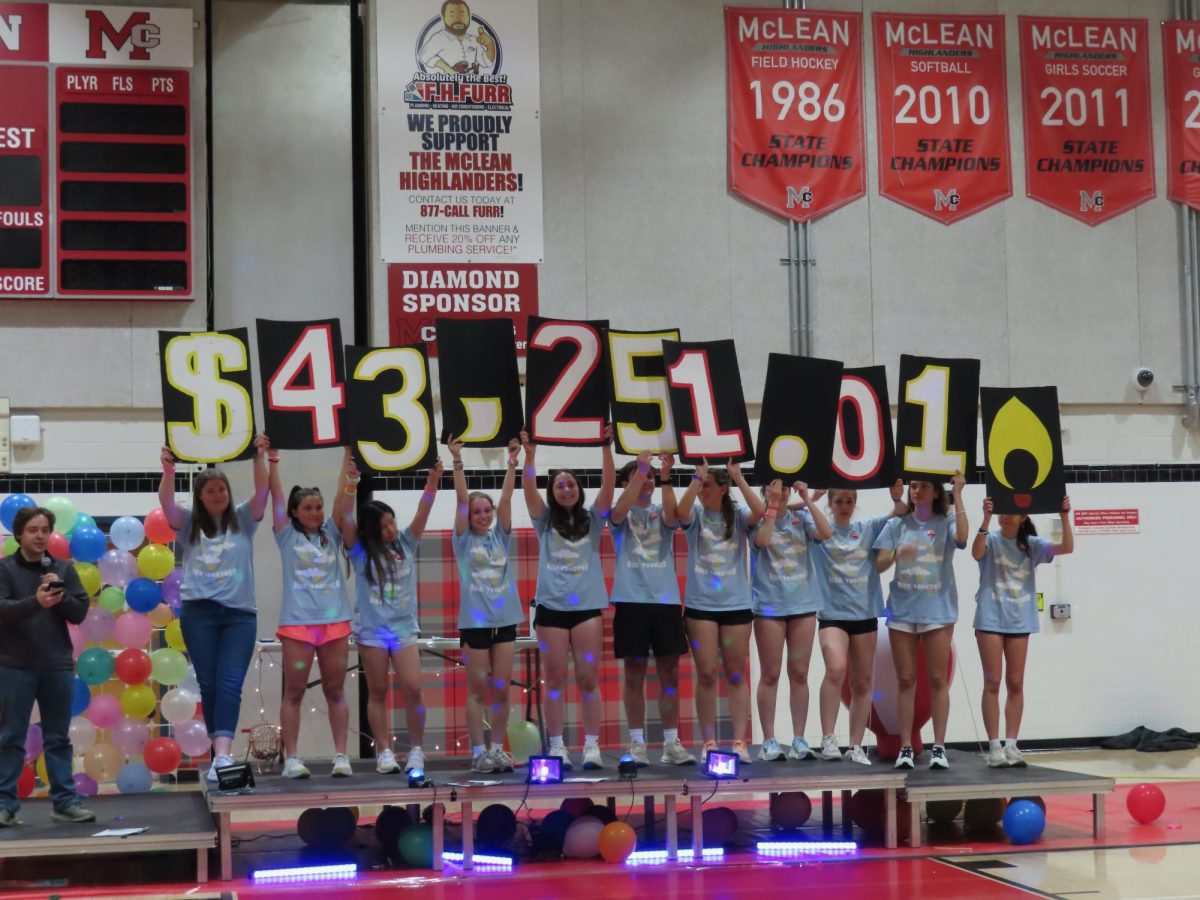On Sunday, July 21, 2024 at 1:45 p.m., President Joe Biden’s top staff were notified of his intention to step aside and drop his bid for re-election following a poor debate performance and continued concerns about his age. A minute later, he made that announcement public.
By late afternoon, Vice President Kamala Harris confirmed she would seek to take Biden’s place on the Democratic ticket, complete with Biden’s endorsement. Over the next 24 hours, Democratic operatives launched one of the largest—and perhaps most successful—digital political rebranding campaigns in history.
Harris, once ridiculed for her energetic laugh and unique expressions, was ‘memed’ overnight into a 21st-century icon. Many of her viral phrases, from “You think you just fell out of a coconut tree?” to “What can be, unburdened by what has been,” became trademarks of her supporters. The following day, her campaign’s brand-new rapid response team launched KamalaHQ, the digital hub for “coconut-pilled” fans across the country.
Since its inception, KamalaHQ gained 6.9 million followers across TikTok, Instagram and X combined. The account—which features attacks on Donald Trump, his running mate JD Vance and the Republican Party—marking a significant departure from past Democratic campaign strategies. Their posts frequently incorporate current social media trends and sounds, which are meant to draw the attention of younger voters. The style, although untraditional, is an attempt at counteracting Trump’s similarly unconventional campaigning methods.
“We get to include people in the conversation and give young people a seat at the table—otherwise they might have not been able to receive some [political] messages,” Voters of Tomorrow Deputy Press Secretary Jessica Siles said.
By mid-Monday, Harris had received an endorsement from British music star Charli XCX following the release of her sixth studio album, Brat. KamalaHQ embraced the British electropop singer’s support immediately, replacing its profile banner across social media platforms with an imitation of the slime-green album cover. The campaign’s fast moves paid off with Gen Z; an Axios poll less than a week into the campaign’s launch found that Harris had a seven-point advantage over Biden in support among youth in a matchup versus Trump.
“We talked about ‘brat’ so much this summer,” Siles said. “The trends break through because they’re relatable to a lot of people and because they start organically.”
Unlike other elections, the 2024 election is a uniquely digital race. The Harris campaign is set to spend $200 million on digital advertising by the November election, surpassing traditional television spending by more than $30 million. Gen Z political groups like Voters of Tomorrow play a fundamental role in advancing Harris’s strategy.
“[Data analytics] has really made things easier to reach specific groups of people,” Siles said. “Something we were experimenting with earlier this year [at Voters of Tomorrow] was targeting large events and doing digital ads geographically based on the area that the event is happening in.”
From the memes and jokes used by KamalaHQ to portray Trump in a disconcerting light to the viral assassination attempt images capitalized on by the Trump administration, social media continues to advance candidates and challenge them in unprecedented ways.
“If you want to reach voters, you have to meet them where they are, and [right now that is] largely on social media,” said digital campaign strategist Robin Lloyd, the senior vice president of Rational 360, a communications strategy firm.
Shifting Strategies
Presidential candidates have always used a blend of charisma, popularity and strategic publicity to win over voters.
In the early history of the United States, candidates often diplomatically toured the country, campaigning county by county for voters’ backing. They purchased newspaper ads, both promoting themselves and criticizing their opponents, and extensively wrote out their policy positions. Yet, they often failed to reach the working masses, effectively restricting campaign discourse to the educated upper class.
“You really see the beginning of mass rallies with the election of 1824, with Andrew Jackson. He thought it totally proper that he should go out and appeal to the common man in a very direct way,” AP US History teacher Dylan Wedan said.
With the rise of television, all of that was set to change. In 1960, the Chicago affiliate of CBS, WBBM-TV, hosted the first televised presidential debate in U.S. history between John F. Kennedy and Richard Nixon. That year marked the beginning of an era in which a candidate’s television presence became a crucial factor in shaping public perception and voting decisions. At the start of every debate, candidates would step onto the stage, shake hands and begin discussing their platforms on the topics that mattered most to Americans.
“There was a public expectation of greater decorum in the past… whether or not the individuals involved were legitimately more virtuous is another question,” Wedan said.
In September, Harris and Trump came head-to-head in their first presidential debate, marking the first time the two met in-person. The candidates covered topics such as immigration, abortion and the economy. At one point, Trump promoted a myth that Haitian immigrants in Springfield, Ohio, kidnapped pets and ate them. In the following weeks, that myth had major implications. Bomb threats rocked local Springfield schools and a Proud Boys overtook the small town, with the mid-debate comments being shared millions of times across various social media platforms.
“There was a public expectation of greater decorum in the past… whether or not the individuals involved were legitimately more virtuous is another question,” Wedan said.
Interestingly, campaigns no longer shy away from TikTok, despite its controversy—with TikTok having faced the threat of a ban for years due to its links with China—in order to reach a wider young audience.
“You see a lot of campaigns going on on TikTok and you see more people using the power of celebrity endorsement,” a senior source on Capitol Hill told The Highlander, asking to remain anonymous. “When you look back to the 1800s and early 1900s, you had a lot of community leaders and parties [that] were a really big deal.”
By using social media as a campaigning strategy, information translated into short-form content, both true and false, can spread faster than ever before. These information is then regurgitated across various platforms, contributing to prejudicial judgement.
“Those 30-second clips, they go viral. You can post them all over the place, and lots of times people get heavily influenced by them without really knowing the full story,” senior David Sheng said.
Even clips without any information on a campaign can go viral and promote a candidate.
“Just the other day I was on TikTok and I saw a Trump edit to Ken Carson. I saw in the comment section people saying ‘I know who I’m voting for now,’” senior Morgan Gary said. “It’s so easy to take a small clip of the debate and speak with a certain rhetoric that may or may not be true.”
Despite the ease with which misinformation can spread on platforms like TikTok, there is no denying the way that the edits, informational videos and memes that spread on such platforms can make or break a candidate’s success and the voters’ perception of them.
“When we see a certain official in a TikTok trend, we’re [more] inclined to vote for them to see that human, funny side,” Gary said.
With social media platforms playing a much larger role in campaigning today, candidates are adjusting their strategies and catering more to younger voters, thereby deemphasizing some of the formality that has historically guided presidential elections.
“The election now involves more of the youth,” Gary said. “So [many] more people who are 18 are now excited to vote. I talk to my friends and I’m almost jealous [that] I don’t get to vote myself.”
A Looming Transformation
According to Pew Research Center, over the last three elections, turnout from voters ages 18-29 has remained the lowest of any other age demographic at about 10.5%. As candidates turn to social media for this election, younger voters become the primary target for digital campaigns.
“The most important and effective campaigning comes down to when you’re able to speak someone’s language and level with them and meet them where they’re at,” Siles said. “[The pro-Harris trends] were successful because young people were able to finally see a candidate that was able to both have fun and have clips and jokes online in a way that is super authentic.”
Instead of press releases and live statements, candidates rely on soundbites to get their points across. With platforms like TikTok and Instagram making sharing widely accessible, these soundbites are used in video after video, catching the attention of the public with strong verbiage. The shift to short-form content deemphasizes the importance of live statements, as candidates can now communicate their goals and beliefs digitally in a more controlled way. However, it also raises some questions about each candidate’s ability to address the public in times of need.
“It’s [over] the last 20 years where debates seem hyper-scripted,” AP Comparative Government teacher Ian Howell said. “Donald Trump is the least subtle at that. He’ll often not answer the questions, but he says either what’s on his mind or what he wants to say.”
Trump’s direct and unsubtle approach bodes well with social media algorithms, helping him gain attention and notoriety.
“The data says that young people in general are big consumers of social media and that it’s where they get a lot of their news and political information,” Siles said. “[Being able] to communicate with young voters and young potential voters is really awesome.”
Memes, infographics and social media content on platforms like TikTok have made younger generations of voters more familiar with each candidate. The Harris campaign has especially leaned into digital campaigning—with KamalaHQ at front and center of its efforts—in an effort to engage the youngest generation of voters, who typically show up least often at the polls.
“With TikTok taking the throne [as] a huge platform for a lot of people, younger people especially, you’re seeing both sides engage more in a way that they weren’t four years ago,” said senior Republican digital strategist Brandon Howell, who heads the political communications firm Repubclick.
Through these platforms, information is able to be recycled to reach a wider audience, thus expanding the range of people absorbing various pieces of information.
“When you look at digital campaigning and also address the social media parts of it, now you have a lot of cross-platform message pollination. And by that, I mean a campaign or even a viral or planted moment could emerge on one platform, and then that content is taken and repackaged and repurposed across multiple platforms,” the Capitol Hill source said.
Challenges of Misinformation
Campaigning in the digital era comes with its fair share of challenges. With abundant sources of information and advertisements available with the click of a button, misinformation has been more prevalent than ever before and increasingly difficult to reign in.
Misinformation campaigns discourage voters by spreading misleading claims about policies and personal attacks on candidates’ private lives. Candidates also rely on increasingly polarizing language to rally their supporters while pushing unfeasible promises.
“If no one’s reading the plans of either the Republicans or the Democrats, then no one knows we can’t afford the tax cuts that either party is proposing because we’re already a trillion dollars in debt,” AP Comparative Government teacher Ian Howell said. “You’re stuck voting for one of them, so which one is lying to you the least?”
Recently, Trump’s running mate, J.D. Vance, publicly admitted to creating false stories for the purpose of attention.
“If I have to create stories so that the American media actually pays attention to the suffering of the American people, then that’s what I’m going to do,” Vance told CNN in a September interview.
‘Creating stories’ is no longer a taboo on either side, as has been demonstrated time and time again in the buildup to the presidential race. As a result, identifying manufactured narratives versus reality has become increasingly difficult.
“Social media makes it very easy for radical claims to be amplified, and people don’t always see the fact-checking or the full context,” Sheng said. “Teenagers especially don’t understand the big picture; we’re often missing out on a lot of information because we’re stuck in social media usage rather than reading newspapers and so on.”
Several inaccurate memes have appeared revolving around candidates’ intimate relations. One meme in particular relates to Trump’s running mate, JD Vance, falsely claiming that Vance had intimate affairs with his couch. It quickly gained traction on social media, prompting many Americans to fall for the claims and drawing the attention of fact-checkers.
Trump’s campaign has also brandished falsehoods as a tool against Harris. On Trump’s Truth Social media platform, Trump infamously shared a post claiming that “blowjobs impacted both [Hillary Clinton and Kamala Harris’] careers,” in reference to a popular false claim that Harris engaged in intimate affairs for political favors.
Neither the couch myth nor the sexual acts-for-favors myth have any basis in fact.
“People don’t really understand what the consequences of the things they’re saying are, so it’s really easy to be misled by what you see on social media,” Sheng said.
In addition to false personal claims, false policy claims continue to make the rounds on prominent social media platforms.
Tesla mogul Elon Musk, who owns X, repeatedly shared AI-generated election-related images and misinformation powered by X’s AI tool, Grok. Musk endorsed Trump shortly after he faced an attempted assassination in July, and Trump has since shared many of his X posts.
“[Arizona is] refusing to remove noncitizens from voter rolls,” Musk said in a recent X post, despite the claim having been debunked.
In one post, Musk used an AI-generated image of Harris as a communist with the caption, “Kamala vows to be a communist dictator on day one. Can you believe she wears that outfit?” referencing the AI figure pictured in a red suit with a red hammer-and-sickle hat.
“[Deepfakes] are more harmful because they implicate the person directly, and are hard to fact-check,” said Marshall High School student Samad Quraishi, who heads the Centre for Voter Initiatives and Action.
Another one of Musk’s high-reach reposts on X professed that “women and low t[estosterone] men” are unfit for leadership and that a “republic of high-status males is best for decision making.” The post continued to profess that America needed a “democracy only for those who are free to think.”
While this content such as this may seem obviously false to some, it can be convincing to others. Much of this depends on one’s familiarity with artificial intelligence and social media media.
“Being digital natives, young people are really good at detecting authenticity and for the most part being able to gauge what’s real and what’s not because we’ve grown up alongside social media and the internet and a lot of these digital tactics,” Siles said.
Nonetheless, advocates on both sides of the aisle have pushed for more limits and oversight for campaigning in the digital era.
“We need to make sure that we are equally making sure that we protect young people and protect Americans in whatever spaces they are in, while also making sure that we do have accessible platforms for information and conversation,” Siles said.
Looking Forward
As the U.S. enters a new era of dependence on social media in popular culture, younger generations are influencing broader society—political leaders included—in new ways. In an attempt to catch the attention of younger voters, both candidates have changed their tones and strategies, turning the 2024 presidential race into a highly digitized competition.
“You’re going to continue to see campaigns spending more and more money on digital marketing,” Brandon Howell said.
With younger generations playing a greater role in politics, it becomes more important than ever to be educated and responsible, particularly with information spreading at a far faster rate online.
“Never stop at the first two sentences of an article,” Ian Howell said. “Always go to the third paragraph. Question the message, and when someone’s promising you something wonderful, you always [have] to jump to ‘Is this reasonable?’”
Understanding opposing viewpoints and looking beyond surface-level information is crucial to forming a rounded opinion, especially as manipulated media becomes more common.
“Read or consume content from one outlet or person that you disagree with every single day,” Brandon Howell said.
Being responsible media consumers starts with understanding that algorithms cater content to each person’s likes and interests.
“In general, whether it’s social media, based on the algorithm of the content you consume, or whether it’s what news channels you may choose to watch,” Brandon Howell said. “People are more in an echo chamber than they’ve ever been at any point.”


















